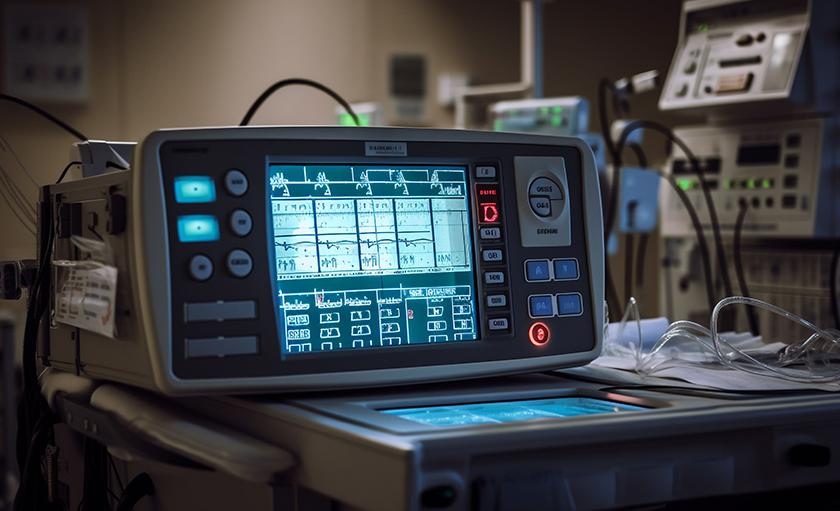
- 22 Nov 2023
-
 Edwin Livinston
Edwin Livinston
How Portable Diagnostic Equipment Is Changing Emergency Care
In emergency medicine, every second counts. The faster a diagnosis is made, the sooner treatment can begin — and lives can be saved. In recent years, the emergence of portable diagnostic equipment has revolutionized the way emergency care is delivered, particularly in pre-hospital settings, rural areas, and overcrowded ERs.
What Is Portable Diagnostic Equipment?
Portable diagnostic equipment includes compact, mobile medical devices that allow healthcare providers to perform essential diagnostic tests on-site, without the need for large, stationary machines. Examples include:
-
Handheld ultrasound machines
-
Portable X-ray systems
-
Point-of-care blood analyzers
-
ECG/EKG monitors
-
Wearable patient monitors
These devices are typically battery-operated, lightweight, and connected to cloud-based systems or mobile apps for real-time data sharing.
The Impact on Emergency Care
1. Faster Diagnosis in the Field
First responders and paramedics can now use portable tools to assess patients before they even reach the hospital. For example, handheld ultrasound devices can quickly evaluate internal bleeding or organ damage, enabling better triage decisions.
2. Improved Outcomes in Rural and Remote Areas
In remote regions where access to advanced medical facilities is limited, portable diagnostic tools allow frontline health workers to perform critical tests. Cloud connectivity also enables specialists in urban centers to interpret results remotely, guiding immediate treatment decisions.
3. Reduced ER Overcrowding
By equipping ambulance teams and urgent care centers with portable diagnostics, many minor or non-emergent cases can be resolved or redirected before they reach emergency rooms. This helps reduce wait times and improves care quality for truly urgent patients.
4. Streamlined Hospital Workflows
In hospitals, portable equipment can be wheeled directly to patients in isolation or intensive care, minimizing the need for patient transport. This reduces delays, lowers infection risk, and improves overall efficiency.
Real-World Examples
-
Butterfly iQ+, a handheld ultrasound that connects to smartphones, is being used by EMS teams and ER doctors around the world.
-
i-STAT blood analyzers provide lab-quality test results in minutes from just a few drops of blood — ideal for trauma or stroke patients where timing is critical.
-
KardiaMobile, a compact ECG device, enables quick heart rhythm assessments and has been adopted by both paramedics and physicians for rapid cardiac evaluations.
Challenges and Considerations
While portable diagnostic equipment offers immense advantages, challenges still exist:
-
Training: Proper use of portable tools requires specific training, especially in fast-paced emergency settings.
-
Accuracy and Calibration: Devices must meet high standards for reliability and need regular maintenance.
-
Data Integration: Compatibility with hospital systems and electronic health records (EHRs) is essential for a seamless workflow.
The Future of Portable Diagnostics
As technology advances, we can expect even smarter devices — with AI-assisted interpretations, better battery life, and 5G-enabled real-time consultations. Portable diagnostics are not just a trend; they’re a critical evolution in emergency care.
Final Thoughts
Portable diagnostic equipment is empowering healthcare providers to make faster, smarter decisions — at the bedside, in the field, and on the move. For emergency care, this technology isn’t just convenient — it’s transformative.
What Is Portable Diagnostic Equipment?
Portable diagnostic equipment includes compact, mobile medical devices that allow healthcare providers to perform essential diagnostic tests on-site, without the need for large, stationary machines. Examples include:
-
Handheld ultrasound machines
-
Portable X-ray systems
-
Point-of-care blood analyzers
-
ECG/EKG monitors
-
Wearable patient monitors
These devices are typically battery-operated, lightweight, and connected to cloud-based systems or mobile apps for real-time data sharing.
The Impact on Emergency Care
1. Faster Diagnosis in the Field
First responders and paramedics can now use portable tools to assess patients before they even reach the hospital. For example, handheld ultrasound devices can quickly evaluate internal bleeding or organ damage, enabling better triage decisions.
2. Improved Outcomes in Rural and Remote Areas
In remote regions where access to advanced medical facilities is limited, portable diagnostic tools allow frontline health workers to perform critical tests. Cloud connectivity also enables specialists in urban centers to interpret results remotely, guiding immediate treatment decisions.
3. Reduced ER Overcrowding
By equipping ambulance teams and urgent care centers with portable diagnostics, many minor or non-emergent cases can be resolved or redirected before they reach emergency rooms. This helps reduce wait times and improves care quality for truly urgent patients.
4. Streamlined Hospital Workflows
In hospitals, portable equipment can be wheeled directly to patients in isolation or intensive care, minimizing the need for patient transport. This reduces delays, lowers infection risk, and improves overall efficiency.
Real-World Examples
-
Butterfly iQ+, a handheld ultrasound that connects to smartphones, is being used by EMS teams and ER doctors around the world.
-
i-STAT blood analyzers provide lab-quality test results in minutes from just a few drops of blood — ideal for trauma or stroke patients where timing is critical.
-
KardiaMobile, a compact ECG device, enables quick heart rhythm assessments and has been adopted by both paramedics and physicians for rapid cardiac evaluations.
Challenges and Considerations
While portable diagnostic equipment offers immense advantages, challenges still exist:
-
Training: Proper use of portable tools requires specific training, especially in fast-paced emergency settings.
-
Accuracy and Calibration: Devices must meet high standards for reliability and need regular maintenance.
-
Data Integration: Compatibility with hospital systems and electronic health records (EHRs) is essential for a seamless workflow.
The Future of Portable Diagnostics
As technology advances, we can expect even smarter devices — with AI-assisted interpretations, better battery life, and 5G-enabled real-time consultations. Portable diagnostics are not just a trend; they’re a critical evolution in emergency care.
Final Thoughts
Portable diagnostic equipment is empowering healthcare providers to make faster, smarter decisions — at the bedside, in the field, and on the move. For emergency care, this technology isn’t just convenient — it’s transformative.

